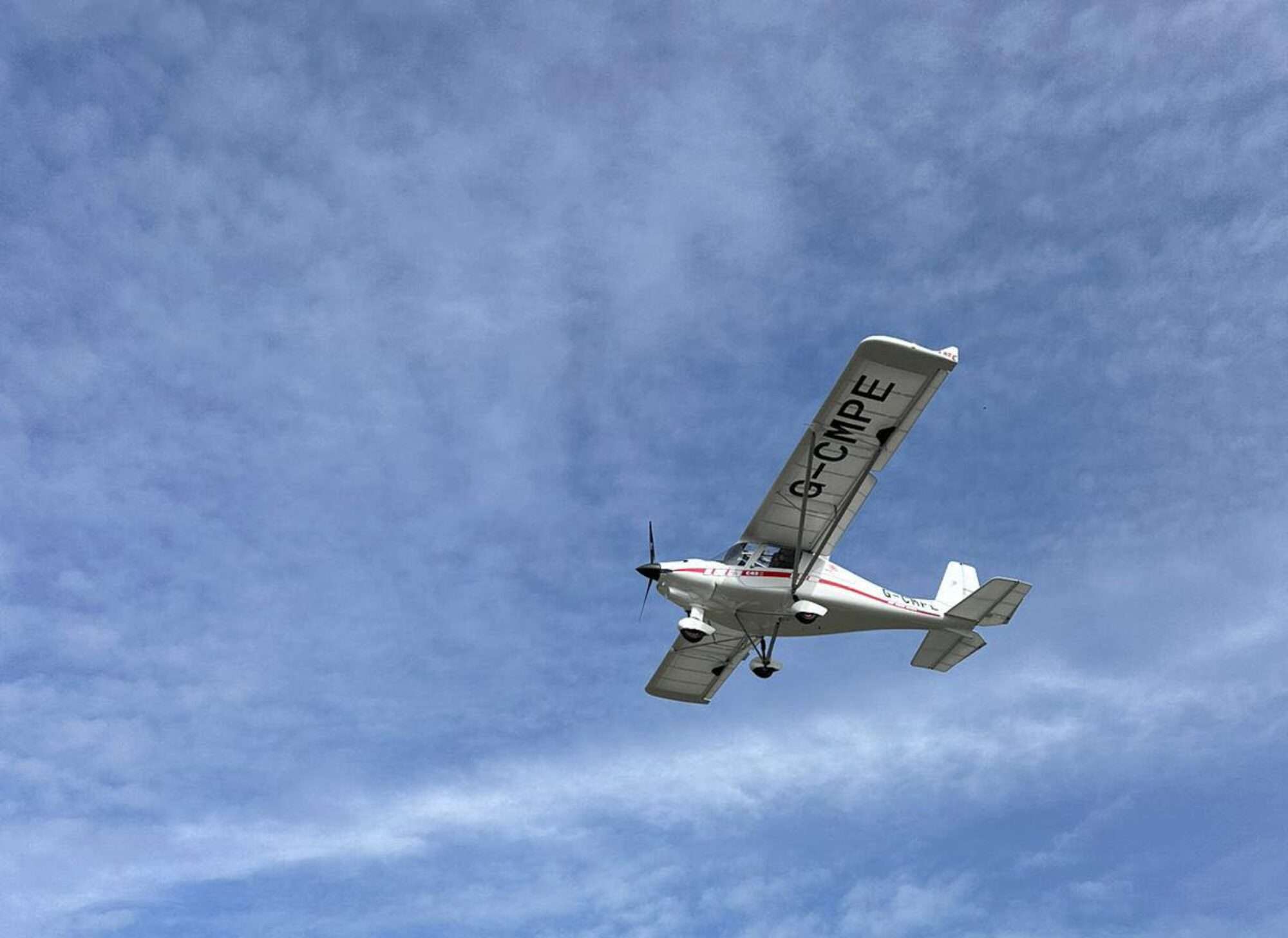What a difference a week makes, last week too wet and windy this week hardly a cloud in the sky and only a light wind. So time to fly, but wait as I’m checking the aeroplane out ready for my lesson Alan arrives together with his wife and granddaughter and CAKE, lots of cake! Well those of you that read my blog may have noted the occasional reference to Alan and the lovely cakes and savouries he brings in, all freshly baked by his wife. Well today we had both quantity and quality, but the club house was full and it was unlikely there would be any left by the time we got back!
All the C42’s were out when I first arrived and Hazel was just getting her Thruster out in fact the hanger was looking decidedly empty, I have not seen it this empty since the summer. I went into the clubhouse and got the strobe out of my flight bag and showed Katie the capacitor that had blown. Shortly after Pat and Sheila arrival and then Mike returned in the training C42, I hooked up the Strobe to my test power supply and showed Pat it working, it was just the capacitor that had malfunctioned, the only issue I have now is putting it back together! I had ordered the correct size tubing online, but instead of sending me 57mm they sent me 60mm which was too big, I’m waiting for them to return my email on the matter, I will report back.


I’m interested to find out if the strobe issue is a common fault, so if you have a self-contained strobe unit such as the Skyflash 2000 that is not working and would like to donate it to me, please send me a message via my contact page.
So to my lesson, my last flying blog was entitled “Going backwards in the circuit” and I was quite down beat about things, well like the weather things were a lot better today, my first two landings were quite good, even Mike said so, the third I came in a little hard and bounce so full power straight on and around we went. I noticed something different on this landing, on the first two landings I had ensured I changed my focus from the landing point to the end of the runway and told myself not to land, but to fly as far down the runway I could without landing which resulted in a good slow landing, this was not new Mike had told me this before but today it seemed to make more sense to me. On the bounce landing I noticed I kept my focus on the landing point, so the next time I made sure I changed my focus as I had the first two and again I landed quite well, the only real issue was still only using the left side of the runway! We didn’t get as many circuits in today as the parachute club are back from their Christmas break and they have priority.
When we returned to the clubhouse to our surprise there was some cake left, a great way to round of the days flying and today I actually feel like I made progress, but I have been here before, so yet again I will need to wait until my next lesson to see if it was progress or not!
This blog continues to get hits ranging from 50 to 105 per days and both my twitter and blog followers continue to build, now if only I could find a company who would like a low cost advert to help me offset my running cost that would be great too!
Lastly, but not least it remains for me to say thank you to all who have uploaded photos, many in response to my request for photos on the www.microlightforum.com which is a great place to hang out if you don’t already. However not all forums are as happy to help, Flyer’s forum www.flyer.co.uk cancelled my post asking their members if they could help with “Disapproved” for the following reason “The reported message has the only purpose to advertise for a website or another product” I have emailed them back pointing out that my site is not a commercial venture or a rival to theirs and the link was direct to the upload page, I have asked them to reconsider, but to date no reply, oh well I guess not all forums are as self-assured as Microlightforum.com.
If you do have any pictures please help me grow the collection by uploading them here.











